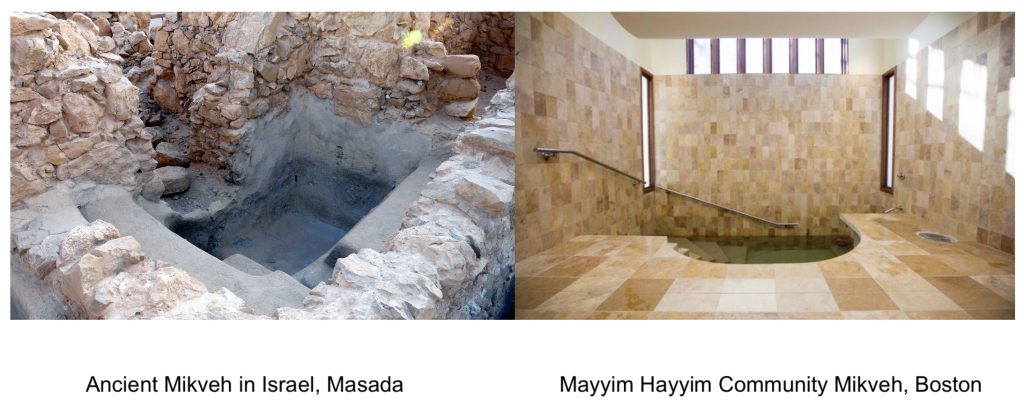Mikveh can connect us to our ancestors, as we use this same spiritual tool for celebration, healing, transformation, and renewal.

Origins and Early Use
The mikveh, a Jewish ritual bath, has its roots in ancient times and is steeped in religious significance. The word mikveh, literally meaning collection, appears as early as the creation story in Genesis, when God brought the waters together, separating them from the land and making the oceans. The concept of ritual purification, particularly through the use of water, is a recurring theme in the Hebrew Scriptures. The practice of immersion in a mikveh is derived from various passages in the Biblical texts, including Leviticus and Numbers.
Classical Antiquity
During the Second Temple period (516 BCE – 70 CE), the mikveh became an integral part of Jewish life. It was used by both men and women for various forms of ritual purification, most notably by women for monthly niddah (menstrual purity), by converts to Judaism, and by the High Priest on Yom Kippur. The ruins of numerous mikva’ot from this period have been discovered in archaeological sites around Israel, including in the vicinity of the Temple Mount in Jerusalem.
Middle Ages and Renaissance
Throughout the Middle Ages and into the Renaissance, the use of the mikveh continued to be a central practice in Jewish communities across the world. According to the Talmud, if a new Jewish community is established, it is incumbent upon the community to build a mikveh first, even before building the synagogue. Despite varying societal pressures and sometimes challenging conditions, Jewish communities went to great lengths to maintain a mikveh. It was not just a place for ritual purity but also a center for community life and education.
Modern Era
In the modern era, the mikveh has undergone a renaissance, with many communities investing in these facilities to make them more welcoming and accessible. While traditional uses continue, contemporary interpretations and practices have also emerged. Today, mikva’ot are used not only for their original purposes but also for spiritual renewal and significant life transitions, such as before marriage, following childbirth, ending a period of bereavement, or to mark other personal moments of transition.
Contemporary Significance
Today, the mikveh is seen as much more than a ritual bath. It’s a symbol of spiritual cleansing and renewal, deeply rooted in Jewish history yet evolving with contemporary Jewish practice. Mikva’ot are found in Jewish communities worldwide and remain a vital part of Jewish life and spirituality.
Sovev joins a growing worldwide mikveh movement which takes a welcoming and inclusive approach to ritual immersion and encourages the full diversity of the Jewish community to discover and embrace this spiritual practice.

